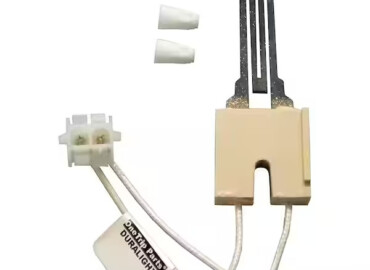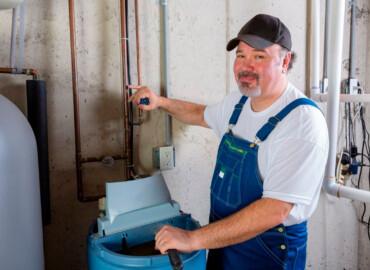Furnace Maintenance Checklist For Canadian Homes
As the temperatures drop and winter approaches, it is crucial to ensure that your furnace is in top shape to keep your home warm and comfortable. Regular furnace maintenance not only ensures optimal performance but also improves energy efficiency and extends the lifespan of your furnace. Neglecting furnace maintenance can lead to a host of problems, including reduced heating efficiency, increased energy bills, and even potential safety hazards.
Benefits of regular furnace maintenance
Regularly maintaining your furnace offers a plethora of benefits. Firstly, it ensures that your furnace operates at its highest efficiency, leading to lower energy consumption and reduced heating costs. A well-maintained furnace also provides consistent and comfortable heat throughout your home, preventing cold spots and ensuring a cozy environment.
Moreover, regular maintenance helps identify and address potential issues before they escalate into major problems. By detecting and fixing minor issues early on, you can avoid costly repairs or even the need for a complete furnace replacement. Additionally, a well-maintained furnace operates more safely, minimizing the risk of carbon monoxide leaks and other safety hazards.
Signs that your furnace needs maintenance
While regular maintenance is essential, there are certain signs that indicate your furnace requires immediate attention. If you notice any of the following, it is crucial to schedule a maintenance service promptly:
- Uneven heating: If certain areas of your home are significantly colder than others, it may indicate an issue with your furnace or ductwork.
- Increased energy bills: A sudden spike in your energy bills without any apparent reason could be a sign of an inefficient or malfunctioning furnace.
- Strange noises: Unusual noises such as banging, rattling, or screeching coming from your furnace may indicate loose or damaged components that need attention.
- Frequent cycling: If your furnace turns on and off frequently, it could be a sign of a faulty thermostat, a clogged filter, or other issues that require maintenance.
- Weak airflow: Reduced airflow from your vents can be a sign of a clogged filter, blocked ducts, or a failing blower motor.
- Yellow burner flame: A yellow or flickering burner flame instead of a steady blue flame suggests incomplete combustion, which can release harmful carbon monoxide into your home.
The ultimate furnace maintenance checklist
To ensure optimal performance and efficiency of your furnace, it is essential to follow a comprehensive maintenance checklist. Here are the crucial steps to include in your furnace maintenance routine:
1. Check and clean the air filter
The air filter plays a crucial role in maintaining good indoor air quality and protecting your furnace from dust and debris. It is recommended to clean or replace the air filter every 1-3 months, depending on usage and the type of filter. A clogged or dirty filter restricts airflow, reducing your furnace’s efficiency and potentially causing damage to the system.
2. Inspect and clean the blower motor and fan
The blower motor and fan are responsible for distributing warm air throughout your home. Regularly inspecting and cleaning these components ensures they operate smoothly and efficiently. Remove any dust or debris accumulated on the blades and motor, ensuring proper airflow.
3. Clean the burner and heat exchanger
Over time, the burner and heat exchanger can accumulate dirt and debris, affecting their efficiency. Inspect these components and clean them using a soft brush or vacuum cleaner. Be cautious and consult a professional if you notice any signs of damage or corrosion.
4. Check and adjust the thermostat
The thermostat controls the temperature in your home. Ensure that it is calibrated correctly and functioning accurately. If you notice any discrepancies between the set temperature and the actual temperature, consider recalibrating or replacing the thermostat.
5. Inspect and clean the ductwork
Inspecting and cleaning the ductwork is crucial for maintaining good indoor air quality and efficient airflow. Remove any dust, debris, or potential obstructions from the ducts to ensure optimal performance.
6. Lubricate moving parts
Proper lubrication of the furnace’s moving parts, such as bearings and motors, reduces friction and extends their lifespan. Consult your furnace’s manual for the recommended lubrication points and use a high-quality lubricant.
7. Check and clean the condensate drain
If your furnace has a condensate drain, ensure it is free from debris and blockages. A clogged condensate drain can lead to water leaks and potential damage to your furnace.
8. Inspect and test safety controls
Safety controls, such as limit switches and pressure switches, play a crucial role in preventing hazardous situations. Regularly inspect and test these controls to ensure they are functioning correctly and providing the necessary protection.
9. Check and adjust gas pressure
Proper gas pressure is essential for the efficient operation of your furnace. Consult a professional to check and adjust the gas pressure if needed. Incorrect gas pressure can lead to inefficient combustion and potential safety hazards.
10. Test the ignition system
The ignition system ensures that your furnace starts and operates smoothly. Test the ignition system to ensure the proper functioning and address any issues promptly.
11. Inspect and clean the flue pipe
The flue pipe removes combustion gases from your furnace. Regularly inspect the flue pipe for any signs of damage or blockages. Clean or repair the flue pipe as necessary to maintain proper ventilation.
12. Check and tighten electrical connections
Loose or faulty electrical connections can cause your furnace to malfunction or even pose a fire hazard. Inspect and tighten all electrical connections to ensure a safe and reliable operation.
13. Test and calibrate the limit switch
The limit switch helps regulate the temperature inside your furnace. Test and calibrate the limit switch to ensure it activates and deactivates at the correct temperatures.
14. Inspect and clean the pilot light or ignition system
If your furnace has a pilot light, inspect it for proper functioning and cleanliness. Clean or replace the pilot light as needed. If your furnace has an electronic ignition system, ensure it is free from dirt and debris.
15. Check and adjust the blower belt
Inspect the blower belt for signs of wear or damage. Adjust or replace the blower belt if necessary to ensure proper blower operation.
16. Inspect and clean the vent system
The vent system removes combustion gases from your home. Regularly inspect the vent system for any blockages or damage, ensuring proper ventilation.
17. Test the carbon monoxide detector
Carbon monoxide is a silent and deadly gas that can be released by a malfunctioning furnace. Test your carbon monoxide detector regularly to ensure it is functioning correctly. Replace the batteries as needed.
How often should you perform furnace maintenance?
It is recommended to perform furnace maintenance at least once a year. Ideally, schedule a professional maintenance service before the start of the heating season to ensure your furnace is in optimal condition. Regular maintenance helps prevent potential issues and keeps your furnace operating efficiently throughout the winter.
DIY furnace maintenance vs. professional maintenance
While some furnace maintenance tasks can be performed by homeowners, it is crucial to understand your limitations and seek professional assistance when needed. DIY maintenance tasks such as cleaning or replacing the air filter, inspecting and cleaning the blower motor, and checking the thermostat can be done by homeowners. However, complex tasks involving gas lines, electrical components, or intricate furnace mechanisms should be left to trained professionals to avoid accidents or damage to the system.
Common furnace maintenance mistakes to avoid
When it comes to furnace maintenance, there are certain common mistakes that homeowners should avoid:
- Neglecting regular maintenance: Skipping or postponing regular maintenance can lead to reduced efficiency, increased energy bills, and potential safety hazards.
- Overlooking the air filter: The air filter should be cleaned or replaced regularly to maintain proper airflow and prevent dust and debris from entering the furnace.
- Improper lubrication: Using the wrong type of lubricant or over-lubricating can cause damage to the furnace’s moving parts. Follow the manufacturer’s recommendations for proper lubrication.
- Ignoring warning signs: If you notice any unusual noises, reduced airflow, or other signs of furnace malfunction, address them promptly instead of ignoring them.
The importance of scheduling regular professional furnace maintenance
While some maintenance tasks can be performed by homeowners, scheduling regular professional furnace maintenance is crucial. Trained technicians have the knowledge, experience, and tools to thoroughly inspect and maintain your furnace, ensuring optimal performance and safety. Professional maintenance services can detect hidden issues, provide necessary repairs, and offer valuable advice for maximizing the lifespan of your furnace.
Furnace maintenance services and professionals to consider
When choosing a furnace maintenance service or professional, consider the following factors:
- Experience and expertise: Look for professionals with extensive experience in furnace maintenance and a good track record.
- Certifications and licenses: Ensure that the technician or company is certified and licensed to perform furnace maintenance.
- Reputation and reviews: Read customer reviews and testimonials to gauge the quality of service provided by the professional or company.
- Comprehensive maintenance packages: Look for professionals who offer comprehensive maintenance packages that cover all essential aspects of furnace maintenance.
- Emergency services: Consider professionals who offer emergency services in case of sudden furnace breakdowns or malfunctions.
- Price and affordability: Compare prices and choose a professional who offers competitive rates without compromising on quality.
In conclusion, regular furnace maintenance is crucial for ensuring optimal performance, energy efficiency, and safety. By following the ultimate furnace maintenance checklist and scheduling professional maintenance regularly, you can enjoy a comfortable and warm home throughout the winter while minimizing the risk of costly repairs or replacements. Don’t overlook the importance of furnace maintenance – it’s an investment that pays off in both comfort and savings.
If you are looking for a furnace repair service in Toronto, Call us.




